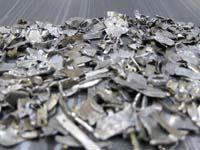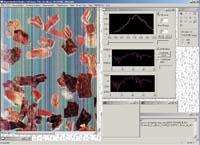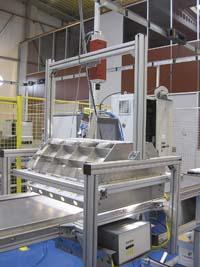To recycle scrap more than human vision

The components of electronic devices are usually iron, lead, stainless steel, aluminum, plastic or brass, among others. Some of them are easily separable in colors, shapes and weight. Others, however, cannot be differentiated according to these criteria. This is the case, for example, of aluminium and stainless steel.
Although these limits have long been known, they are now based on human vision and manually distribute the components of the electronic devices strapped in recycling facilities. To see the internal components it is necessary to disassemble the tools.
It is easy to observe that this system of recycling of electronic devices, besides being limited, is expensive, since it requires a lot of labor and time. In addition, some components are not separated. For example, in the case of TVs only disassemble the cathodic ray tube, the rest breaks it.
Today, electronic tools account for 4% of European urban waste, but expect to double the amount by 2015. It is therefore very important to overcome these limits and recycle electronic scrap in a more economical and efficient way.
With this objective, the SORMEN project was launched by organizations from all over Europe. This is a biannual research project funded by the European Union within the framework of a cooperation project between technology centres and SMEs in several countries with similar needs (CRAFT project).

The goal of the project is basically to largely automate recycling work and develop a system that separates components from electronics much more accurately. The working group has brought together seven entities: two technology centres (Tecnalia del País Vasco and the CSL Centre of the Liège University of Belgium), two recycling companies (Indumetal Recycling of the Basque Country and IGE Hennemann of Germany), a manufacturer of recycling machines (HEVAC Basque Ambient of Catalonia), a medium country design company
Multi-spectral images at the base
The system being developed will not move too far from the system they now use to recycle, but will continue to address what the light components they receive reflect. We humans call color that light, because the light we receive is from the visible spectrum.
To a certain extent, what we call color is determined by the molecular composition of each object: molecules absorb parts of the light that comes to them and reflect others.
It is not limited to the molecules of the object. Whoever receives that light, the spectator, also has to do. The spectator perceives his capacity, his light in one or another field of the spectrum. Human sight does not perceive the area visible to the outside light. But the objects also reflect the rays outside the visible area. And sometimes they provide very useful information. Stainless steel and aluminum, for example, reflect very different rays in the infrared zone.
The system resulting from the SORMEN project will be able, among other things, to detect automatically the light reflected in the infrared light. It is called multi-spectral identification because it detects light from several areas of the spectrum.

Each its function
Each participating entity in the project has its obligation. For example, recycling companies initially defined the requirements to which the system should respond: quantity of material to be identified, identification and separation of components, minimum and maximum size of components, etc. The entities responsible for the lighting of the system, for their part, analyzed in detail the types of rays on which one could differentiate one and another components.
Based on this, an electronic scrap separation system prototype has been developed. Once the last minute problems have been solved, it has been thought to market the system. A researcher from Tecnalia who has participated in the project, Artzai Picon, has told us that this work corresponds to the companies of the group, but it will not be easy for them. And because of the crisis, many companies that might be interested in it by themselves have frozen their investments, so it is very likely that the implementation of the developed system will be quite long.





